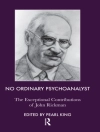‘This book addresses, in a comprehensive and practical manner, the increasingly important topic of preventing youth violence. The scope of the book is broad, incorporating psychological, social, and cultural factors. The emphasis on a gender analysis in understanding violent behavior by male youth in relationships with young women is apt and timely. Used together with the treatment manual, The Youth Relationships Manual, this book provides a sound basis for a prevention program.’
–Mary Nomme Russell, School of Social Work,
University of British Columbia
‘Alternatives to Violence challenges each of us to reexamine our assumptions about youth violence and society′s efforts to reduce it. David A. Wolfe and his colleagues make a convincing argument for a preventive and health–promoting response that empowers youth to make changes in their daily world. The contents of this book obliges those of us who work with youth to also make changes in the way we practice in the field. This book provides the most in-depth and up-to-date view of the problem of youth violence in North America and what it will take to reduce it. As one who works on the issue of children and violence, I found this book both powerful in its analysis and hopeful in the solutions it offers.’
–Jeffrey L. Edleson, Professor, School of Social Work and Director, Higher Education Center Against Violence & Abuse, University of Minnesota
‘Alternatives to Violence . . . is well, clearly, and interestingly written. The concepts are solid and laid out systematically. The authors present a strong foundation and empirically support their premises. The book meets my need academically and holds my interest as a reader. I agree so strongly with their hypotheses and ideas that I found myself thinking ′′Great, ′′ ′′Well thought out, ′′ ′′Nicely written, ′′ and so on as I read. I whole-heartedly endorse this book.’
–Alyce La Violette, Alternatives to Counseling Associates,
Long Beach, California
Instead of looking for ways to contain, deter, or punish violence, Alternatives to Violence explores how to develop practical means of promoting healthy, nonviolent relationships. Drawing from recent studies concerned with the formation of healthy relationships, this book examines how youths can form connections that will reduce not only the risk of violence against women and children but also the potential of men to become abusive. This clearly articulated model suggests that adolescents, who are beginning to build intimate relationships outside of the family, can learn to break patterns of male entitlement, dominance and aggression, and female passivity and deference with the help of preventive programs. The Youth Relationships Project is a program that grew out of the model created in this book and is detailed with instructions for application in a companion volume, The Youth Relationships Manual. The project helps youths build relationship skills and learn how to act socially within the community. The authors actively support a health promotion paradigm as the foundation for issues and solutions raised in these books and look toward future changes in policy and programs that embrace this new prevention model.
Bold and timely, Alternatives to Violence and its companion volume, The Youth Relationships Manual, offer a new approach to preventing violence that will appeal to a wide audience of practitioners, community agency workers, administrators, policymakers, and interns. In addition, students preparing to work in the fields of mental health, education, social work, sociology, and public health, as well as professionals in these areas, will find the book innovative and informative.
Daftar Isi
A Call for Action
Violence in the Lives of Children, Youth and Families
Responding to Violence
Establishing a Commitment to Violence Prevention
Approaching Solutions
Youth as Resources
A Developmental Model of Relationship Violence and Abuse
Applying the Principles
Core Ingredients of Successful Prevention Programs
The Youth Relationships Project
Tentang Penulis
Dr. Wolfe holds the inaugural RBC Chair in Children′s Mental Health at the Centre for Addiction and Mental Health, and heads the CAMH Centre for Prevention Science. He is also Professor of Psychiatry and Psychology at the University of Toronto. Since 2007 he has served as Editor-in-Chief of Child Abuse & Neglect: The International Journal. He is a fellow of the American Psychological Association, past President of Division 37 (Child, Youth, and Family Services), and received a Diplomate in Clinical Psychology from the American Board of Professional Psychology (ABPP). He has provided extensive assessment and consultation to child protective services, schools, and the court with respect to issues of child abuse and violence.












